Zetta Elliott's Blog, page 94
February 20, 2011
read-in
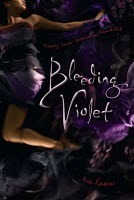 Today's the day! Did you read Bleeding Violet? If so, stop by Reading in Color or tweet your responses to the series of questions posted 3x today. Here are the first topics for discussion:
Today's the day! Did you read Bleeding Violet? If so, stop by Reading in Color or tweet your responses to the series of questions posted 3x today. Here are the first topics for discussion:
1. The mother-daughter relationship of Hanna and Rosalee. Did you like it, dislike it? Did a particular scene bother you especially? Did a particular scene make your heart melt in the most unexpected way? Personally, right away I figured things would be OK when Rosalee made Hanna wear raingear on her way to school but then I started to worry..
2. Who would win in a verbal exchange-Hanna's or Wyatt's mom? Oooo tough one. I'ma go with Rosalee though. She's got ice in her veins!
3. Swan. Did Swan creep you out? Is there some hidden meaning behind this wooden Swan carving? Personally I'm not one to find deeper meanings in things, but I love it when other people do. To me, Swan just makes Hanna feel closer to Poppa….








February 18, 2011
Black Comic Book Day
 This is a great event coordinated by several black illustrators, including Jerry Craft—more information can be found at his website.
This is a great event coordinated by several black illustrators, including Jerry Craft—more information can be found at his website.
NEW YORK, FEBRUARY 19, 2011 – Saturday, February 12, bookstores in Chicago, Atlanta and Detroit will host Black Comic Book Day to celebrate and make more widely available the work of African-American comic book writers and artists. In Chicago, four racks permanently dedicated to African-American comics have been placed at venues around the city, including one in the DuSable Museum. New York holds its Black Comic Book Day on February 19, at the Hue-Man Bookstore and Café in Harlem.
While these inaugural events are being held during Black History month, the display racks are permanent, dedicated additions to the stock offered by the hosting bookstores.
Black Comic Book Day is the brainchild of artists/writers Turtel Onli, father of "The Black Age" comic art movement, and Jerry Craft, creator of the award-winning Mama's Boyz comic strip, distributed by King Features Syndicate since 1995. The idea developed as the duo brainstormed ideas to promote their work along with that of the many other talented artists and writers in the African-American community.
Onli and Craft believe that these events will have many benefits, such as encouraging reading and providing heroes for young readers to emulate from the African-American community…
February 19th (NYC) Join syndicated cartoonists Jerry Craft (Mama's Boyz), Ray Billingsley (Curtis) and comic book writers and artists N Steven Harris (The Fringe and Ajala: A Series of Adventures), Alex Simmons (The Cartoon Life of Chuck Clayton), comic historian Professor Bill Foster and more as they unveil their rack at the Hue-Man Bookstore and Café in Harlem, 2319 Frederick Douglass Blvd, between 124th and 125th Streets. The rack will also feature work by Andre Batts, David Walker, Keith Miller; Ray Billingsley, Omar Bilal, Joe Robinson Currie and Glen Brewer. For more info on the NYC event, email jerrycraft@aol.com
DOWNLOAD A FLYER OF THE PDF FOR THE NYC EVENT








February 16, 2011
shine a light
 It's time once again for Nerds Heart YA! Take a moment and help to shine a light on great books that didn't get to stand in the spotlight last year. You can find complete guidelines here:
It's time once again for Nerds Heart YA! Take a moment and help to shine a light on great books that didn't get to stand in the spotlight last year. You can find complete guidelines here:
When can I nominate books?
Nominations are open from 14th February 2011 to midnight GMT on 7th March 2011.
What are the criteria ?
To qualify for Nerds Heart YA 2011 a book must:
Have been published between Jan 1st 2010 and Dec 31st 2010
Contain significant characters that fit into at least one of the seven categories of under represented groups that the Nerds Heart YA organisers have identified, or have been written by an author who comes from within one of these groups of people
Be young adult fiction
Be a book that you feel has been under represented by book blog coverage
How do I nominate books?
Follow the link through to the nomination form and fill it out. You will need to fill out a separate form for each book nominated.
Doret's got a complete wrap-up of the week's news over at The Happy Nappy Bookseller, so stop by…








February 13, 2011
great interview with Jacqueline Woodson
After being up all night sneezing, it was nice to sit down with a cup of tea and read this interview with Jacqueline Woodson over at Rhapsody in Books:
RIB: As author Neesha Meminger recently wrote, "there is a vast plethora of novels showing the full gamut of the white, heterosexual, able-bodied, middle/upper-middle class teen experience. In terms of racial representation, there are white characters in horror, fantasy, romance, historical, and whatever other genres exist on bookshelves, while teens of colour are offered a limited array of options." Given that whiteness and heterosexuality are apparently considered "the norm" for marketing purposes, what is your opinion of publishing opportunities for authors of color? Do you see much commitment to diversity?
JW: I actually don't think of whiteness and heterosexuality as 'the norm'. Maybe there are people who still do but none of them are close friends of mine. I think the endeavor toward diversity is everywhere – but 'commitment' – I don't know. Because it is a commitment and while I think a lot of people have their hearts in the right place, the work is hard and long and some people give up. I was in the big bookstore here in Park Slope today – (just looking, not buying) and I was surprised to see this tiny Black History Month table –(with books like The Souls Of Black Folks – 'hello, we've written other books since then!!" and a few newer ones on it. Then I went to the teen section and none of the books turned out were by people of color. It was quite a bummer – We can give this situation a thousand reasons, a thousand excuses, but the truth is – something is 'not' happening and it would be great to work toward changing that.








February 12, 2011
give from the heart…
…AND the head. Many book donation programs don't take into consideration the racial and ethnic make-up of the group receiving the books. That's why I was so excited about the GuysLitWire donation project last year (where Native American teens chose the books they wanted in their library), and now Ari at Reading in Color has come up with something just as great—read below and GIVE!
C.O.L.O.R.
Coalition Of Librarians and Online Readers
Online readers being those of us who lurk around book blogs. The librarians (as of right now) are all librarians who blog. The end goal being to donate at least 25 books in two months to a library that could use a little extra TLC. I have four libraries as of right now and depending on the success of the project, more librarians and libraries will be added.
How it works: I provide the link to the wishlist. You buy the books. You are welcome to donate multiple copies of books on the wishlist. If you wish to donate a book of your own, please email the respective librarian or myself first (if possible). To start off, we are using the Book Depository so that international readers have no excuse not to participate  (unless they happen to be in one of the few countries the Book Depository does not mail to).
(unless they happen to be in one of the few countries the Book Depository does not mail to).
Why?: Budget cuts for libraries are increasing. Many of us love libraries and I want to help by sending books to libraries that have been hit hard by the budget cuts. A bonus is that I would like to only send books by/about people of color for children and teenagers, both fiction and non fiction. For now I am focusing on middle schools (6th-8th) and high schools in the U.S. The ideal scenario is to send books about Asians/Black people/Latinos and Native Americans to the library, but to have the majority of the books match the ethnicity of the students.
First up is Edi from Crazy Quilts (I highly recommend you check out her blog first, you won't be able to resist wanting to help this warm and informative librarian). Read my blogger spotlight with Edi.
Edi is a librarian at Arlington Community High School in Indianapolis, Indiana. The majority of her students (90%) are Black. To learn more about the school (including a matchup of Arlington Community High School students who pass their grades versus the state average, which is depressing to say the least) go here.
Project for Arlington Community High School begins: February 11, 2011
Ends: April 11, 2011
Now that I've gotten you all eager to help out, go to the wishlist I made for The Book Depository; from there you can easily buy the book and mail it out, easy peasy.
For your convenience I've included the wishlist titles below:
A Year in Japan by Kate T Williamson
Tales of Otori (1,2,3) by Lian Hearn
Zaharah the Windseeker by Nnedi Okarafor
Before You Suffocate Your Own Fool Self by Danielle Evans
Dragon Road by Laurence Yep
A.D.: New Orleans After the Deluge by Josh Neufeld
Asleep by Wendy Raven McNair
Pyongyang: A Journey in North Korea; Burma Chronices by Guy Delisle
Aya: The secret comes out vol 3
Still I Rise: A Graphic History of African Americans by Roland Laird, Taneshia Nash Laird, Elihu , "Adofo" Bey, and Charles Johnson
Greatest Stars of the NBA Volume 1: Shaquille O'Neal by Tokyopop and Nba
Michelle Obama (Female Force) by Neal Bailey and Joshua LaBell
The Civil Rights Freedom Train (Comix With Content) by Bentley Boyd
All the Rage: The Boondocks Past and Present by Aaron McGruder
Nat Turner by Kyle Baker
Miss Emily the Yellow Rose of Texas by Ben Durr
Yellow Rose the Myth of Emily Morgan by Douglas Brode
Bessie Coleman: Daring Stunt Pilot (Graphic Biographies) by Robbins, Trina, Steacy, and Ken
Captain America: Truth by Robert Morales and Kyle Bake
Fist stick knife gun a personal history of violence by Geoffrey Canada (graphic novel)
Tall Story by Candy Gourlay
Black Frontiers: A History of African American Heroes in the Old West by Lillian Schlissel
Jackie Ormes: The First African American Woman Cartoonist by Nancy Goldstein
Buffalo Soldiers and the American West (Graphic Library, Graphic History) by Glaser, Jason, Smith, and Tod
Booker T. Washington: Great American Educator (Graphic Library: Graphic Biographies) [Paperback]by Braun (Author), Eric (Author), Martin (Illustrator), Cynthia (Illustrator)
Graphic Myths and Legends: Sinbad: Sailing into Peril: an Arabian Tale (Graphic Universe) by Marie P. Croalland Clint Hilinski
Beowulf: Monster Slayer (A British Legend) (Graphic Universe) [Paperback] by Paul D. Storrie (Author), Ron Randall (Illustrator)
Isis & Osiris: To the Ends of the Earth (Graphic Myths and Legends) [Paperback] by Jeff Limke (Author), David Witt (Illustrator)








February 11, 2011
unmanageable me
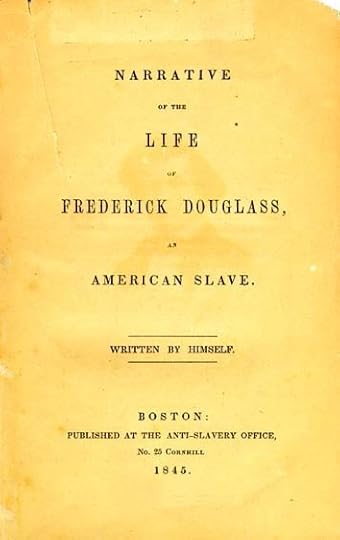 I woke at dawn yesterday and worked out the penultimate scene of my novel. Before leaving for class at noon I managed to write about 1500 words, and suspect I'll finish Ship of Souls this weekend. The day before I'd been mulling over a conversation I'd had with my agent; I intend to follow her sage advice, but was still disturbed by an editor who called Wish "unoriginal." A comment like that from a book blogger would probably just roll off my back at this point, but when an "industry insider" makes such an assessment, there can be serious repercussions—based, in large part, on my response to the charge.
I woke at dawn yesterday and worked out the penultimate scene of my novel. Before leaving for class at noon I managed to write about 1500 words, and suspect I'll finish Ship of Souls this weekend. The day before I'd been mulling over a conversation I'd had with my agent; I intend to follow her sage advice, but was still disturbed by an editor who called Wish "unoriginal." A comment like that from a book blogger would probably just roll off my back at this point, but when an "industry insider" makes such an assessment, there can be serious repercussions—based, in large part, on my response to the charge.
I'm teaching this course on neo-slave narratives—the same course to two different groups of students at two different schools. And that means I'm considering every text three times: once by myself as I prepare the lesson, then twice at my respective jobs. It's interesting how the same text can reveal greater complexity each time you talk about it. I feel like I've read Frederick Douglass' Narrative a hundred times, but this time around it seemed as though he was addressing racial dynamics in the publishing industry. Yesterday I had my students break into groups and look up Douglass' references to black women, white women, black men, white men, Christians, and children. They found that Douglass made a point of exposing the utter vulnerability of black women, whereas white women were depicted as potential allies who inevitably succumbed to "the fatal poison of irresponsible power." Sophia Auld begins to teach young Douglass to read, but is schooled by her husband on the dangers of creating an educated slave: "He would at once become unmanageable, and of no value to his master." Douglass, of course, determines to read and write at any cost and does indeed become impossible to manage. He defies the man hired to "break" him and seizes his freedom by becoming a fugitive.
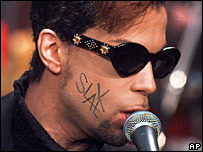 Now, eventually I'm going to show my students this image of Prince—I want to know how they feel about contemporary people using slavery as a metaphor. When a wealthy black artist stuck in an unfair contract with his (white-owned) record label writes the word "slave" on his cheek, what does that really mean? I have often objected to certain references to lynching—Clarence Thomas doesn't deserve to invoke that traumatic history when he feels he's being picked on by white senators who can (and did) grant him immense privilege and power. At the same time, I'm urging my students to consider the LEGACY of slavery—how else can we explain the continued fascination with the topic? Why do so many contemporary black writers choose to focus on the slave experience and the quest for freedom? Why do *I* write about slavery? To problematize the notion of progress, that's why. This is NOT a post-racial society; slavery in the US was abolished in the 19th century, yet convicts continue to be exploited and people (mostly women and girls) are trafficked in this country and around the world at an alarming rate.
Now, eventually I'm going to show my students this image of Prince—I want to know how they feel about contemporary people using slavery as a metaphor. When a wealthy black artist stuck in an unfair contract with his (white-owned) record label writes the word "slave" on his cheek, what does that really mean? I have often objected to certain references to lynching—Clarence Thomas doesn't deserve to invoke that traumatic history when he feels he's being picked on by white senators who can (and did) grant him immense privilege and power. At the same time, I'm urging my students to consider the LEGACY of slavery—how else can we explain the continued fascination with the topic? Why do so many contemporary black writers choose to focus on the slave experience and the quest for freedom? Why do *I* write about slavery? To problematize the notion of progress, that's why. This is NOT a post-racial society; slavery in the US was abolished in the 19th century, yet convicts continue to be exploited and people (mostly women and girls) are trafficked in this country and around the world at an alarming rate.
The horrific reality of enslavement diminishes any attempt made by contemporary individuals to position themselves as virtual slaves. Yet I still found myself marking this passage while reading Douglass' narrative: "To all these complaints [made by the white slaveholder], no matter how unjust, the slave must answer never a word…a slave must stand, listen, and tremble." I then thought of June Jordan's essay, "The Difficult Miracle of Black Poetry," in which she concludes that "America has long been tolerant of Black children, compared to its reception of independent Black men and Black women."
…as long as we…remain the children of slavery, as long as we do not come of age and attempt, then to speak the truth of our difficult maturity in an alien place, then we will be beloved, and sheltered, and published.
But not otherwise. And yet we persist.
I'm going to finish Ship of Souls this weekend. I'm going to send it to my agent and hope that she can find an extraordinary editor who's not afraid of dealing with a black author who is determined to be "unmanageable."








February 10, 2011
fight the good fight
February 9, 2011
a seat at the table
This has been a great week for addressing equity in publishing. Make sure you read Neesha Meminger's guest post at The Ya Ya Yas Blog:
Fantasy and play and romance. Play. It's the space where creativity happens. It's a place of joy, hope, rejuvenation, innocence, and a throwback to childhood when things are (or should be) carefree. In the vast majority of books featuring people of colour and other marginalized voices, the offerings are of overcoming suffering, the pain of being "other", and the untimely loss of innocence. Not that there isn't a place for these novels. They are vital and necessary, and offer a most important mirror for those in similar situations–and I reserve the right to have my next book explore suffering and pain and violence, and maybe even identity. All I am saying is that to only put forward stories of marginalized people suffering nobly or weathering hardship, to the exclusion of other types of stories, is where we once again risk falling into the trap of what Chimamanda Adichie terms the "single story" trope.
Carleen Brice also posted a link on her blog to this article on the Kirkus site: "It's Time for More YA for People of Color."
It's this belief—that teens of color don't read—as well as the assumption that those teens of color who do read need certain kind of books, especially the serious and heavy stuff, that contributes to the dearth of popular fiction for those readers. As a white reader, I can choose to read something "literary" or "popular" about my community from the stock at my local library or bookstore, but readers of color don't necessarily have that option. Especially when bookstores and libraries buy into the whole "people of color don't read" hype.
We want it all! Why do so many editors reject the fact that all readers want—and deserve—a range of books that reflect our diverse realities?








February 8, 2011
story time with Cheryl!
You are cordially invited to a reading of My Friend Maya Loves to Dance by Cheryl Willis Hudson at 11 am on Saturday, February 12, 2011.
Greenlight Bookstore
686 Fulton Street
Brooklyn, NY 11217
(718) 246-0200
Story Time:
Cheryl Willis Hudson
Cheryl Willis Hudson is vice president and editorial director of Just Us Books, an independent publisher of black-interest books for children and young adults. She has written many books for children. In her new book My Friend Maya Loves to Dance, a young narrator tells readers about her friend Maya, who absolutely loves to dance. She can't get enough of dance: the costumes, the grand entrances, the pirouettes, the music, the final bow, and the magic of recitals. She even loves the hard work of practice. But why doesn't her friend dance, too? As part of our ongoing celebration of Black History Month, Greenlight is honored to host Cheryl to present a story of creativity and friendship among children of all kinds.
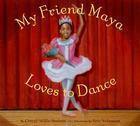
My Friend Maya Loves to Dance
By Cheryl Willis Hudson, Eric Velasquez
$16.95
ISBN-13: 9780810983281
Availability: On Our Shelves Now
Published: Harry N. Abrams, 4/2010








February 7, 2011
Diversity in YA Fiction
Cindy Pon and Malinda Lo have paired up to form a new site—and multicultural book tour! And since it's February, they've invited Doret (from The Happy Nappy Bookseller) to write a guest post for Black History Month. Here's some of what Doret had to say:
I think it's essential not only to read books with Black characters, but to seek out Black authors as well. Writing is a very powerful art and form of expression. To read novels written primarily by outsiders is to disregard the voices of a whole people. Yes, there are a lot of great YA novels written by outsiders, and I've reviewed many, though books written from an outsider's perspective would never and should never replace authentic voices.
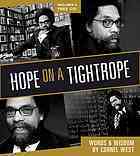 Doret's got great recommendations for further reading, so check it out. Another list of books for Black History month was posted on the YALSA site—the point is to "shake things up" in February instead of falling back on the same old titles. You know I'm not keen on the various heritage months because these topics and titles have value ALL YEAR ROUND. So don't feel like you have to cram twenty titles into one month—spread it out, take your time, savor these books, and spread the word…
Doret's got great recommendations for further reading, so check it out. Another list of books for Black History month was posted on the YALSA site—the point is to "shake things up" in February instead of falling back on the same old titles. You know I'm not keen on the various heritage months because these topics and titles have value ALL YEAR ROUND. So don't feel like you have to cram twenty titles into one month—spread it out, take your time, savor these books, and spread the word…




















